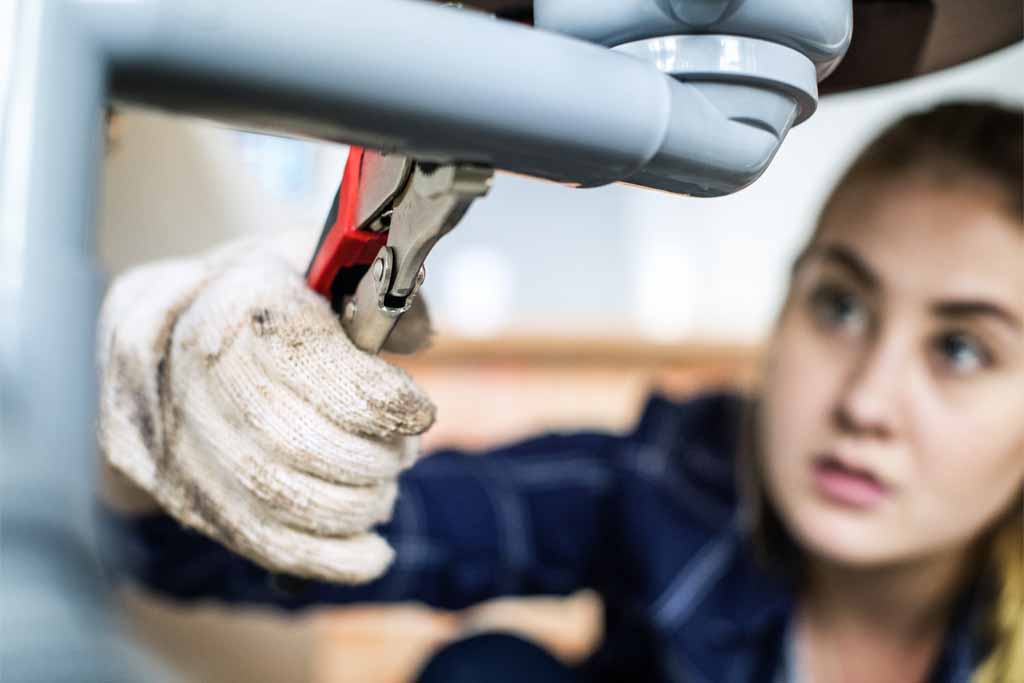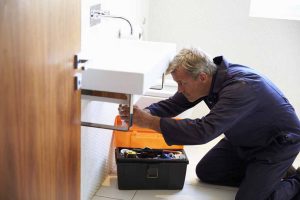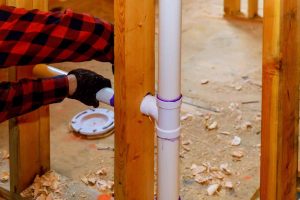You know, plumbing under a kitchen sink can be pretty intimidating. It’s easy to get overwhelmed by all the pipes and fixtures, not to mention the sheer amount of space that needs clearing out to get started.
We’ve got this covered for you. In this guide, we’ll walk you through each step so that no matter how old or new your kitchen sink is, you’ll be able to do it yourself! First up: what is the plumbing under your kitchen sink?
What is the plumbing under a kitchen sink? The plumbing under your kitchen sink consists of two main components: a water supply line and a drain. The water supply line brings fresh, clean water into your home from the city or town’s water system. This water passes through filters to remove contaminants before reaching your faucets and showers.
Plumbing Is Located?
You’ll need to know a little about plumbing before starting. Here’s what you should expect:
- The sink drain, pipes, and fixtures are under the kitchen sink.
- Drain assembly tools needed for this project include a basin wrench, pipe wrench, and adjustable pliers.
It is essential to maintain your plumbing system to avoid expensive repairs down the road. To avoid costly repairs, you must regularly check your plumbing system. This includes the pipes and fixtures located under your kitchen sink. The following steps will help you replace a leaking drain assembly:
- Turn off the water supply to your sink.
- Remove the trap under your sink using a basin or pipe wrench. You will also need adjustable pliers and extra hands to hold it in place while you work. You can use two regular pliers if you don’t have adjustable pliers.
- Remove the nut that holds the drain assembly in place.
- Remove the old drain assembly and put in a new one.
- Reattach your drains, including the P-trap, using pipe wrenches or adjustable pliers and extra hands to hold them in place while you work.
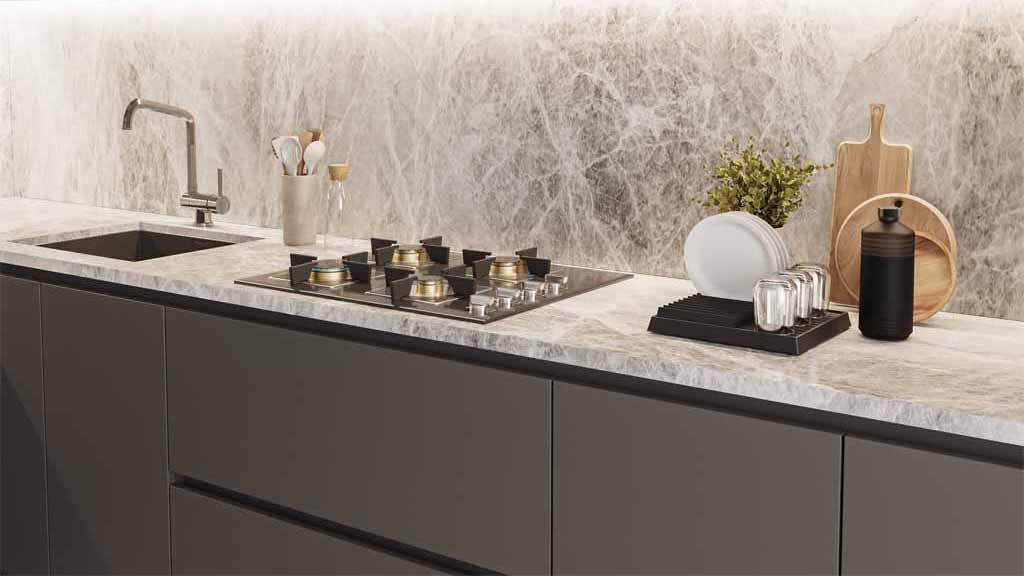
Pipes Are Typically Found
The pipes you will most likely find under a kitchen sink are:
- Water supply pipes
- Drain pipes
- Waste pipes (waste from the sink, dishwasher, and garbage disposal)
Once you’ve removed the screws, lift off the plate and inspect the rubber gasket around the edges. If it’s worn or torn, replace it with a new one. You can find replacement parts at any home center or hardware storeVent pipes (for the range hood). Water supply pipes are needed to bring water into your home. They can be made of PVC or copper and usually connect to the main water pipe under the street.
Sometimes, a pipe is used to bring water out of your home. This is called a drain pipe, which can be made of PVC or copper. You probably have one that runs from your sink into the sewer line in front of your house.
You can find replacement parts at any home center or hardware store. Vent pipes (for the range hood) Water supply pipes are needed to bring water into your home. They can be made of PVC or copper and usually connect to the main water pipe under the street.
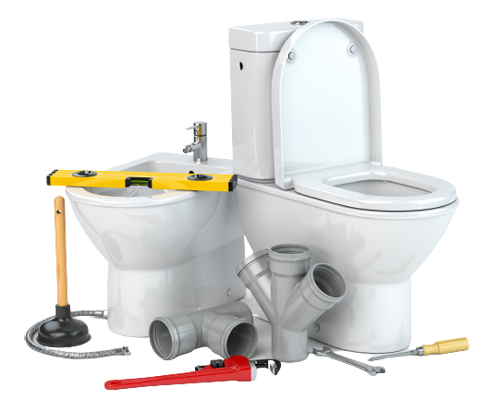
Are Your Drains Slow or Clogged?
Get a Drain Cleaning Today and Say Goodbye to Your Plumbing Woes! Get In Touch With Us And Experience Quality Service At Its Best!
The Function
Let’s talk about the drain and plumbing under a kitchen sink. This pipe carries water and waste away from your sink and keeps everything below your sink dry. The drain can be made of metal, plastic, or PVC. It connects to the P-trap, which sits under your sink, and combines it with the drain line.
It’s a good idea to inspect the drain assembly at least once a year and more often if you use your sink frequently. Remove any under-sink cabinets to access the drain assembly and unscrew or pry off the drain opening plate. The scale is typically secured with two or three hex-head screws.
Once you’ve removed the plate, use a drain snake (a long flexible wire with a curved end) to remove any hair or debris clogging your drain. You can also use this tool to check for leaks in the P-trap.
If there’s no water running through the pipe, but there are still bubbles, then you probably leak. You may have a lousy drain assembly if no tube is inside your sink. You can try to remove the faucet and see if there’s still water from the pipe; if so, you may need to replace the washers. If not, then you might need to replace the entire assembly.

Remove The Sink From Its Place.
Now you are ready to remove the sink from its place. Remove all the screws that hold the sink in place, unscrew the tailpiece, and unthread and disconnect any P-traps connected to it.
When you have a clogged drain, you’ll notice that it takes longer for the water to drain away. This is because your sink’s P-trap is filled with water and waste. If left untreated, this can cause a backup in your pipes and even damage them over timepieces that carry cold water to the faucets, shower, and bathtub. Pipes that carry warm water from the heater to the taps, shower, and bathtub.
Here are some tips to help you keep your plumbing in good shape:
- Check all drains, faucets, and pipes for leaks and damage regularly.
- Use cold water when running appliances such as dishwashers, washing machines, and refrigerators.
- This will save energy consumption and reduce the amount of hot water needed to heat up during peak hours of use.
- Dishwashers and washing machines should only be run when complete. If you have an older model, ensure it is fully loaded before turning on the water supply.
- Turn off all faucets when not used, especially those in unused rooms or areas of your home.
- Keep indoor plants near drains to help prevent clogs from forming inside pipes due to soil buildup.

Are Your Drains Slow or Clogged?
Get a Drain Cleaning Today and Say Goodbye to Your Plumbing Woes! Get In Touch With Us And Experience Quality Service At Its Best!
Fixtures
Under-sink fixtures include:
- Drains. These are used to eliminate wastewater from sinks and toilets when you flush them. They’re connected to pipes outside the house—often through the wall and into the sewer system.
- Sinks. Also known as wash basins, these are used to wash your hands and face and hold water for cleaning dishes or washing clothes. Sinks come in various styles; some are built into cabinets above their faucets, while others sit on countertops as free-standing pieces of furniture.
- You will need to remove the drain assembly. The easiest way is by using a pair of pliers or channel locks to grab onto the bottom of the P-trap and pull it out. Once you have access to the drain, inspect it for any damage.
Look for cracks or holes in the sink and any leaking around the drain assembly. If there is leakage around the drain assembly, tighten it with a wrench until all leaks stop, and then secure it with the plumber‘s puttyVent pipes. Water supply pipes drain water out of the house.
Vent pipes provide air for dishwashers and garbage disposals, so they don’t get clogged up with food scraps that carry water from the cold-water supply to the faucets, shower, and bathtub. A hot water line runs from the heater to the taps, rain shower, and bathtub.
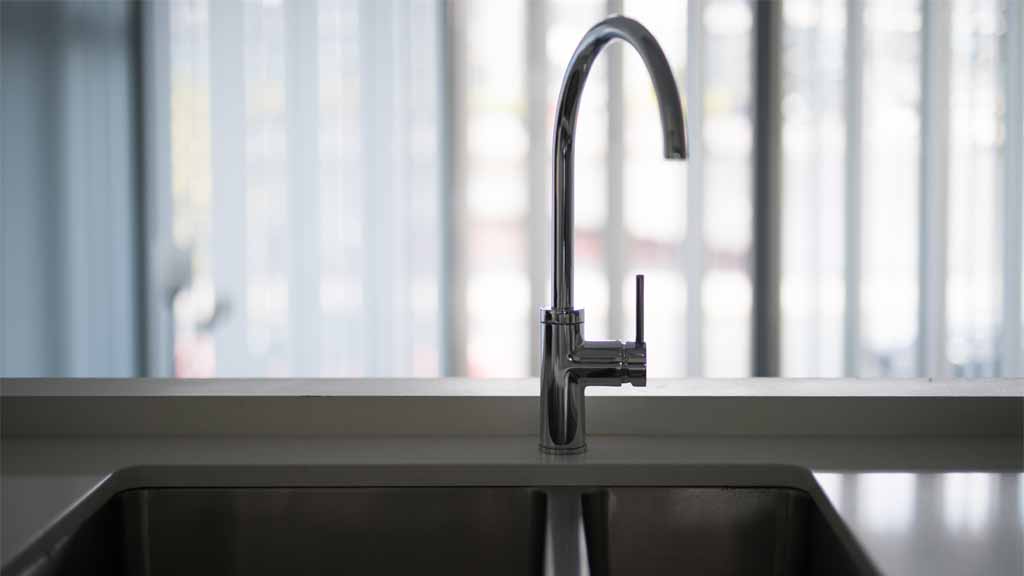
Install Drain Assembly
Now it’s time to install your drain assembly (pipes and disposal flange if needed) and connect everything up to the tailpiece for your sink.
You’d need to remove the drain assembly from its box, which will probably be in two pieces if it was shipped pre-assembled. You’ll also want to put a rag down on the floor so that you don’t scratch up your floor later.
Once you’ve got it box, connect one end of each pipe to their respective fittings on either side of your sink. The hot water supply pipe should have a brass ring at its end; this goes with a coupling fitting that comes with every new sink installation kit—screw them together tightly until they don’t come apart anymore.
Once those two pieces are connected by hand, tighten them even more, using an adjustable wrench until they won’t loosen any more than they already are secured together securely enough not to leak any water.
Once appropriately installed well enough yet is still not too tight as it might damage either one, which could lead to needing replacement parts later on down the road due to carelessness during the installation process itself.
This can prove plumbing toilets and plumbing under a kitchen sink costly depending on the material used in construction. These materials vary depending on the manufacturer, so always ask before buying new products, especially if unsure about the material used. The cost difference between materials may vary greatly depending on the manufacturer’s.
kitchen sinks. These are used for washing dishes, preparing food, and cleaning up after meals. They come in various styles; some have an attached faucet, while others have separate taps on the countertop near their drainpipes.
The P-trap is the U-shaped pipe section connecting the drain to the wall. This is where your water traps, so you don’t have a steady stream of water coming out when you flush or use your sink. If this piece breaks, it can cause significant damage to your bathroom by flooding it with water.
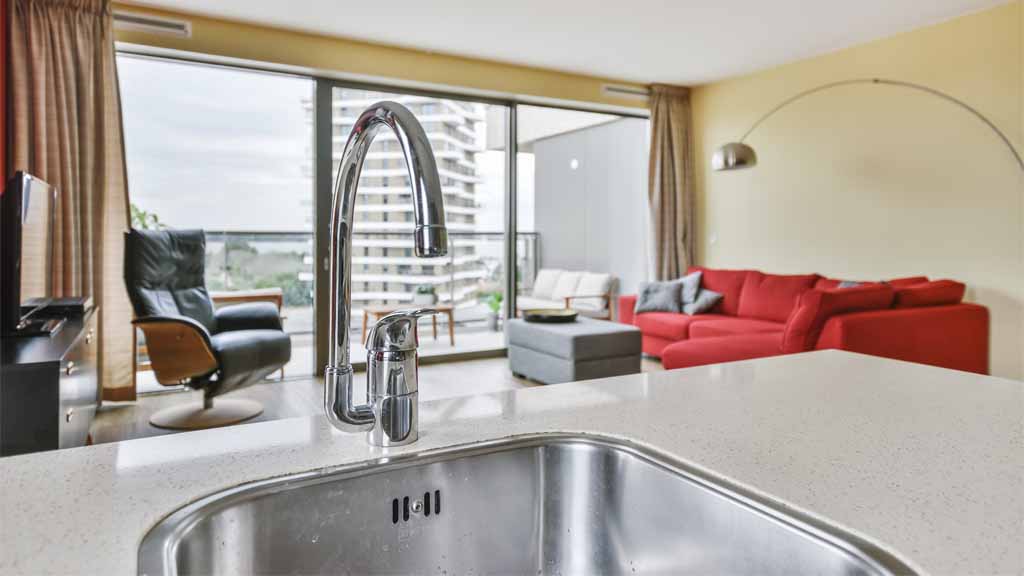
Maintenance
Clean the sink and drain regularly.
- Use a drain cleaner regularly.
- Keep the area around the sink clean: if you have an empty bottle of drain cleaner, keep it out of sight so that you don’t accidentally knock it over and spill it on your countertop; if there are spills on your countertop, clean them up as soon as possible.
A leaky faucet is probably the most common plumbing under a kitchen sink problem in the average home—and it may cost you quite a bit.
A leaky faucet can waste up to 200 gallons of water per day and cause damage to your cabinets and floors, not to mention that running water wastes energy. Well, you have a dishwasher. Run it with a full load as often as possible.
The more water flows through your pipes, the less likely they will freeze during cold weather. It is also essential to insulate pipes in your home; wrapping them with insulation can help prevent water plumbing under a kitchen sink from freezing and bursting pipes during winter months.l you have a garbage disposal, use it regularly.
Please do not put anything down your drain that will clog it. Use cold water when you wash dishes because hot water can cause grease to solidify and become difficult to remove; also, let the plates cool before washing them so that they don’t crack or break if you find that your taps are running slowly, check for an air bubble in the pipes.
You can do this by removing the aerator from the end of your faucet and then turning on the water. If bubbles form, it means there is an air bubble stuck in one of your pipes.

Are Your Drains Slow or Clogged?
Get a Drain Cleaning Today and Say Goodbye to Your Plumbing Woes! Get In Touch With Us And Experience Quality Service At Its Best!
Kitchen Sink
Plumbing under a kitchen sink can initially seem intimidating, but it’s not that difficult. Here are some ways to make sure you get through the job safely and efficiently:
- Remove the sink from its place using a wrench or pair of pliers. This will expose the plumbing beneath it.
- Install drain assembly—you’ll need an assortment of pipe connectors, gaskets, and clamps to do this correctly.
- Maintain your plumbing under a kitchen sink regularly by checking for leaks or corrosion every six months; also, remember to clean out debris from drains every so often with a rag or brush.
And the quality of the products themselves. Always ensure everything is tightened correctly before installing any fixtures or pipes in your bathroom sink because otherwise, you could end up with leaks that will cost you more money to fix plumbing under a kitchen sink.
Keep the area around your sink clean: if you have an empty bottle of drain cleaner, keep it out of sight so that you don’t accidentally knock it over and spill it on your countertop; if there are spills on your countertop, clean them up as soon as possible.
Don’t put grease down the sink: when frying bacon or other oily foods, use a filter to hold back any excess oil before disposing it in the trash can. Always make sure you use the right tools when working with plumbing, as this will ensure your job goes smoothly and efficiently.
Many kitchen sinks are made of stainless steel or porcelain. Stainless steel is durable, easy to clean, and won’t rust or corrode. Porcelain is more expensive than stainless steel, but it’s also easier to maintain.
You can check your faucet for leaks every six months or so. Check to see if there are any drips underneath the sink; if so, there may be a leak somewhere plumbing under a kitchen sink that needs to be fixed. If not, ensure everything is tight and secure before installing any fixtures or pipes in your bathroom sink; otherwise, you could have leaks that will cost money to fix.
Conclusion
It’s not as complicated as it looks, and with the right tools, you can do it yourself. Just follow these steps carefully: remove your kitchen sink from its place, install drain assembly- now it’s time to plumbing under a kitchen sink connect everything up to the tailpiece for your sink; maintenance
How can you maintain your plumbing under the sink? If you want to know how to maintain your plumbing, here are some of the best tips:
Keep your garbage disposal clean by running water through it regularly. Disposals have an air switch that prevents them from turning on if there’s anything caught in the blades. If this switch is clogged with food particles or grease, it will not work correctly and cause problems.
Use baking soda and vinegar to unclog drains. This can be an excellent solution for those stubborn clogs that won’t go away.

